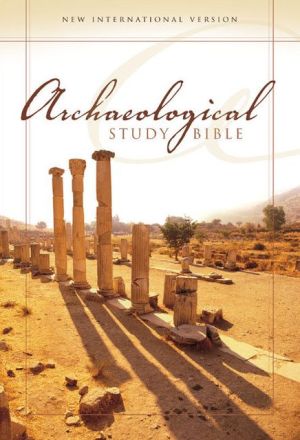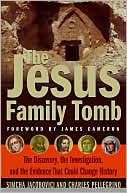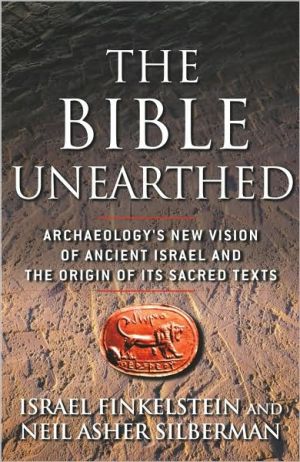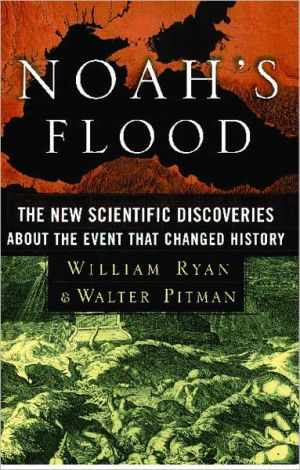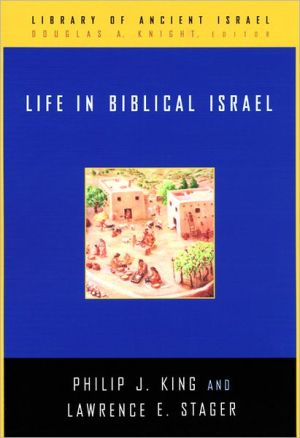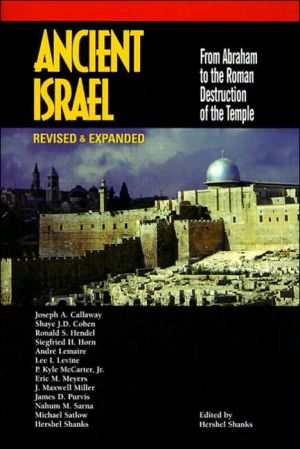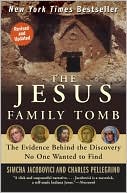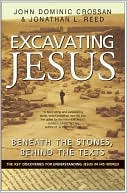The Jesus Family Tomb: The Evidence Behind the Discovery No One Wanted to Find
The Jesus Family Tomb tells the story of what may very well be the greatest archaeological find of all time—the discovery of the family tomb of Jesus of Nazareth. Following the accidental bulldozing of a tomb during the building of a housing complex in suburban Jerusalem in 1980, archaeologists from the Israeli Antiquities Authority were immediately called to the scene. Inside, the archaeologists found ten ossuaries—limestone boxes that served as first-century coffins. Six had inscriptions,...
Search in google:
In 1980, workers at a Jerusalem construction site accidentally uncovered a cache of bone boxes from early Christian times. When reports about the crypt discovery leaked out 16 years later, the London Sunday Times headlined the story as "The Tomb That Dare Not Speak Its Name." Now the full story will be told. In 2005, documentary filmmaker Simcha Jacobovici obtained permission to break through the apartment floor and reenter the tomb. Part archaeological detective story and part early Christian history, The Jesus Family Tomb is a narrative as riveting as any novel. Newsweek “A slick and suspenseful narrative. . . . Jacobovici is a maverick, a self-made Indiana Jones.”
The Jesus Family Tomb\ The Discovery, the Investigation, and the Evidence That Could Change History \ \ By Simcha Jacobovici \ HarperCollins Publishers, Inc.\ Copyright © 2007 Simcha Jacobovici\ All right reserved.\ ISBN: 9780061192029 \ \ \ Chapter One\ Vault of the Ages\ The most famous death in history was the Crucifixion of Jesus of Nazareth.\ Two millennia ago, in Jerusalem, Jesus was scourged and executed by Roman soldiers. The Gospels tell us that his body was taken down from the cross, shrouded in cloth, and placed in a family tomb belonging to one of his followers, Joseph of Arimathea.\ On the third day, Mary Magdalene, Jesus's trusted disciple, found the tomb empty—a moment that marks the origin of the Christian belief in the Resurrection.\ Out of all the millions of words and thoughts devoted to this event, how many people have ever asked why Jesus's body was placed in a tomb carved out of stone in the first place, and not simply buried in the ground?\ According to ancient Jewish laws still in effect today, bodies had to be interred in the ground before sundown on the day of death. Family tombs, cut into rock, qualified as "in the ground." In most places, the bedrock of Jerusalem lay barely more than a few inches below the ground surface. For this reason, the dead were placed in preexisting tunnels, dug into local hillsides. During much of the first century C.E., mostof Jerusalem's tombs were man-made caves, hewn from solid rock and located just outside the city walls. Usually a tomb consisted of two chambers. In the outer chamber, the body was anointed with perfumes, spices, and oils, then shrouded in cloth. Archaeological evidence from hundreds of first-century tombs excavated in the Jerusalem hills is perfectly consistent with descriptions of Jesus's burial as described in the four Gospels. According to both archaeology and the Gospels, the tomb would have been sealed by rolling a large stone in front of its entrance. Behind the seal stone, lying in state in its white shroud, the body was ordinarily given a full year to decompose. After the flesh had vanished, the shrouded bones were collected from the outer, temporary burial chamber and placed in a small limestone box called an ossuary. Occasionally an occupant's name would be inscribed on one side of the ossuary, which was then placed for permanent burial in a small niche deep within the tomb. Eventually ossuaries representing three or more generations from the same family might be sealed, one after another, in a tomb's innermost niches.\ No one knows why the practice of using ossuaries began just prior to the birth of Jesus. Some archaeologists and theologians suspect that the Jewish belief in a bodily Resurrection led to the gathering of bones, to be preserved for the Day of Judgment.\ Regardless of the reason, the Gospels attest to great concern among Jesus's followers about shrouding his body and placing it in a tomb. Because he died late on a Friday afternoon, they needed to bring him to a tomb quickly, before the arrival of sunset and the holy Sabbath. Joseph of Arimathea's newly hewn family tomb was nearby, and it would serve Jesus's family until the body could be moved to a permanent resting place.\ The Gospels also say that on Sunday, before he could be moved, Jesus conquered death, left the tomb empty, and later, on several separate occasions and in several forms, appeared before his disciples.\ But the Gospels also hint at an alternative explanation for Jesus's empty tomb. Matthew says there was another story circulating in Jerusalem after the Crucifixion of Jesus. Although Matthew calls it a lie, according to the rumor, Jesus's disciples secretly came by night and stole away with their Master's body. As Matthew tells it, the story persisted among Jews for a very long time (Matthew 28:1115).\ If the disciples took the body, there is only one thing they could have done with it. They would have reburied it.\ If Jesus was reburied, his family would have waited for his flesh to disappear and then stored his bones in an ossuary, sealed away forever deep in the recesses of his family tomb.\ Spring 1980\ About eleven o'clock on the morning of March 28, 1980, with the Christian season of Lent already a month old and almost over, first light entered a tomb, beneath the treads of a bulldozer. On this exceptionally beautiful Friday, the entire south face of the tomb's antechamber fell away to reveal what looked for all the world like a doorway; carved above it was a symbol that none of the construction crew had ever seen before.\ No one really understood what an array of dynamite detonations and a bulldozer mishap had revealed until the next day, after the Sabbath had arrived, the dust had settled, and a little army of diabolical schoolboys had discovered a collection of strange, new playthings in the ground.\ That is how it began.\ And that is how it almost ended.\ If not for Rivka Maoz and a couple of engineers who revered the past, the damage might have known no end until the losses became epic, without anyone's ever suspecting what had been lost.\ Rivka's family lived within a few meters of the construction site. She happened to be studying archaeology as part of her certification to become a tour guide in Jerusalem. Rivka was a newcomer to Israel and to Judaism. She had emigrated from France. And so it happened that every night her eleven-year-old son, Ouriel, who quickly became fluent in Hebrew, read Rivka books about the Old City, its Temple, and its tombs.\ On that Friday the boy had come running home after lunch, begging his mother to come see what he was certain could be nothing other than an ancient tomb, newly exposed. But when Rivka called the Department of Antiquities (later the Israel Antiquities Authority, or IAA), she was told that the afternoon was already half over and that, in preparation for the Sabbath, all the offices were closing down.\ Rivka tried to make the IAA understand that she had seen the tomb entrance. There was no doubt in her mind that an important discovery had been revealed. She urged them to send someone to guard the tomb lest antiquities dealers, or their henchmen, come by night and steal away with the entire contents of the cave; the best that anyone could promise, however, was to issue a command to halt all dynamiting near the tomb and to send archaeologists to the site early Sunday morning, after the Sabbath was over.\ \ \ Continues... \ \ \ \ Excerpted from The Jesus Family Tomb by Simcha Jacobovici Copyright © 2007 by Simcha Jacobovici. Excerpted by permission.\ All rights reserved. No part of this excerpt may be reproduced or reprinted without permission in writing from the publisher.\ Excerpts are provided by Dial-A-Book Inc. solely for the personal use of visitors to this web site. \ \
Foreword James Cameron vVault of the Ages 1The Investigation Begins 45The Lost Tomb 81On Probability, Possibility, and the "Jesus Equation" 113Beyond the Book of Numbers 143A Mary Named Mariamne 159The Twin 175The "Jesus Equation" Revisited 183The Jesus Standard 193Whence Came the Nazarenes 201The Rediscovery 223The Voices of Time 265Gattaca: The DNA Story 279A Crime Lab's Jesus 293Conclusion 325Selected Bibliography 359Acknowledgments 363
\ From Barnes & NobleIn 1980, workers at a Jerusalem construction site accidentally uncovered a cache of bone boxes from early Christian times. When reports about the crypt discovery leaked out 16 years later, the London Sunday Times headlined the story as "THE TOMB THAT DARE NOT SPEAK ITS NAME." Now the full story will be told. In 2005, documentary filmmaker Simcha Jacobovici obtained permission to break through the apartment floor and reenter the tomb. Part archaeological detective story and part early Christian history, The Jesus Family Tomb is a narrative as riveting as any novel.\ \ \ \ \ John Dominic Crossan"This discovery is potentially the last nail in the coffin of biblical literalism"\ \ \ Newsweek"A slick and suspenseful narrative. . . . Jacobovici is a maverick, a self-made Indiana Jones."\ \ \ \ \ Today Show"Absolutely fascinating . . . many would argue the biggest story or one of the biggest stories of our lifetime."\ \

